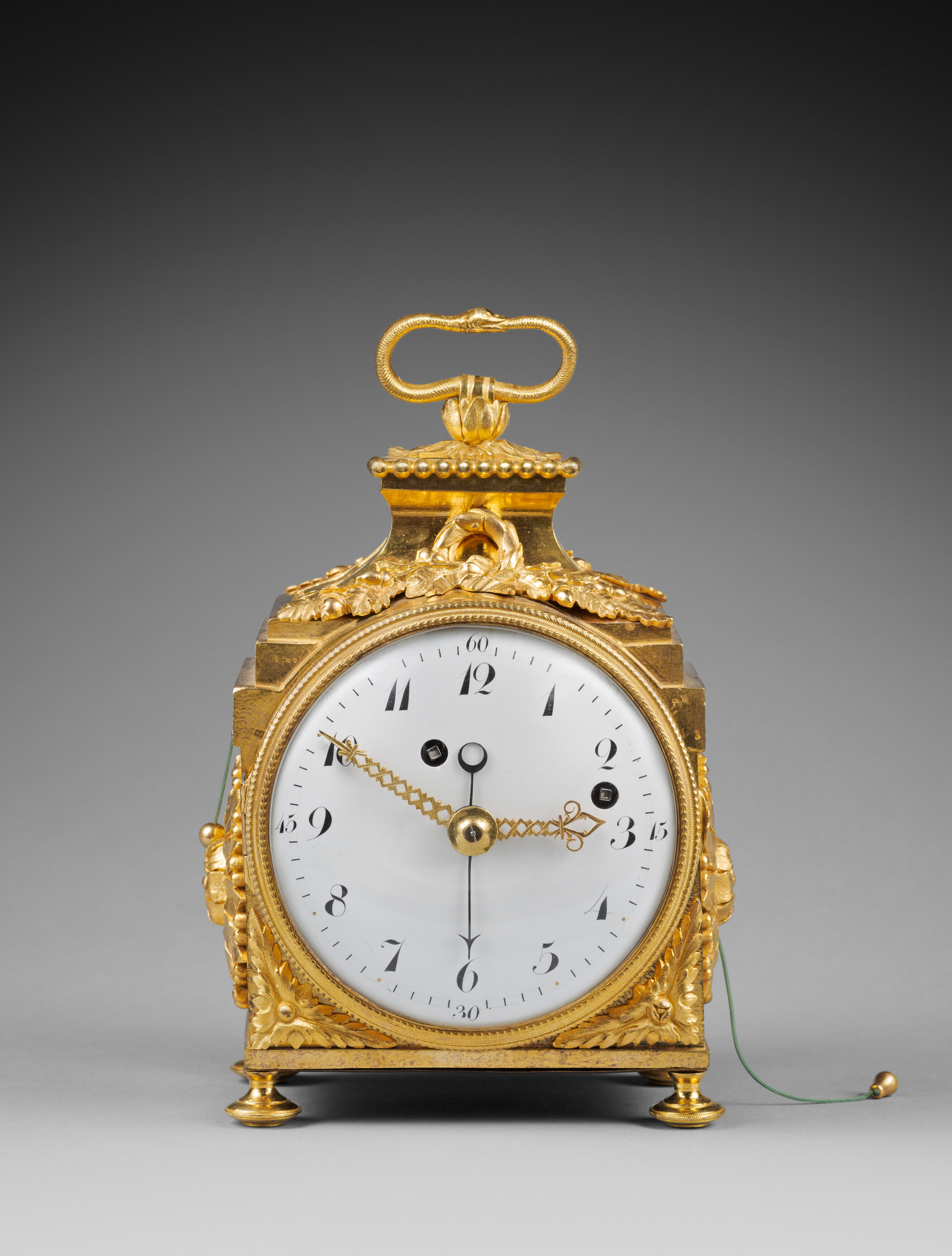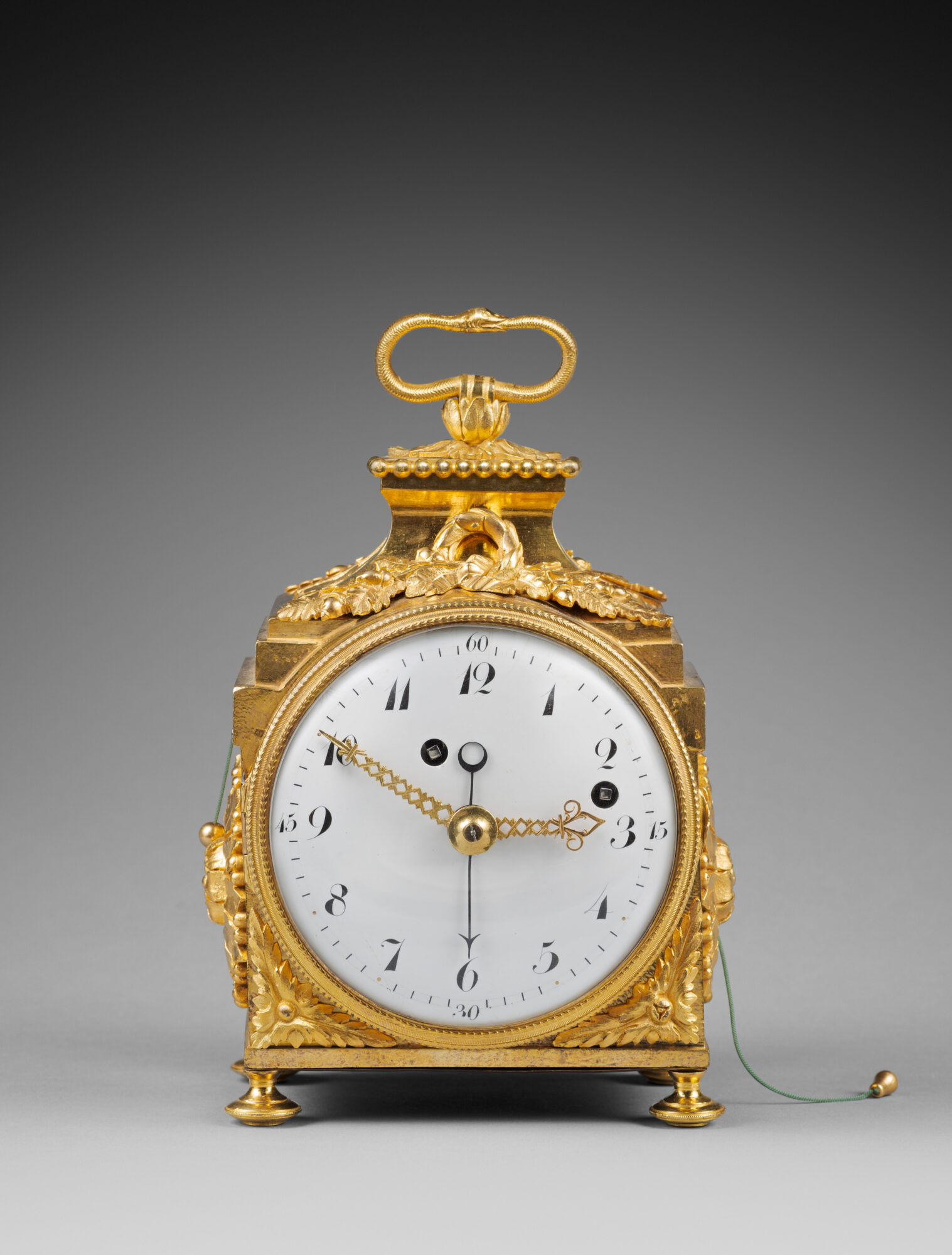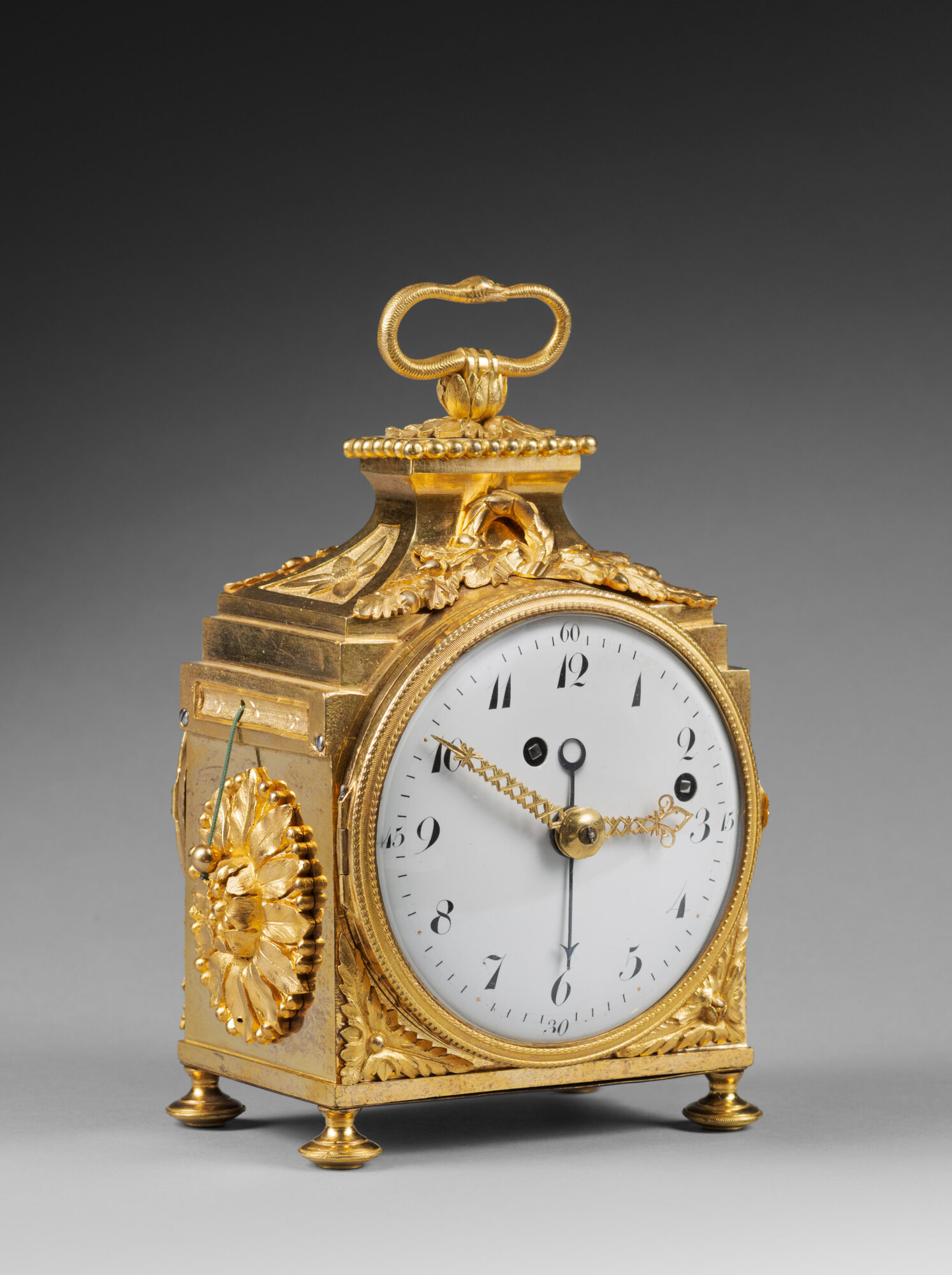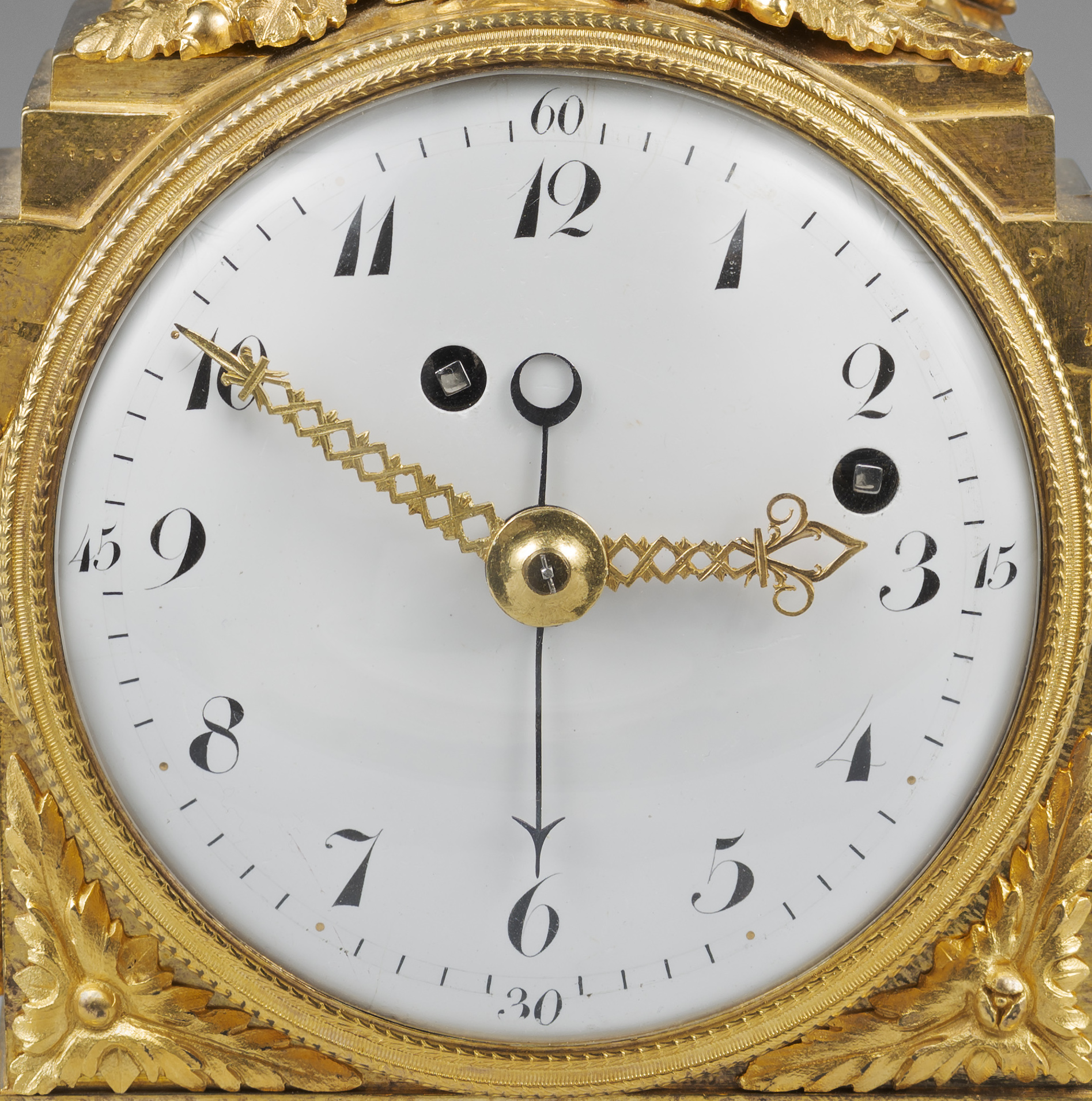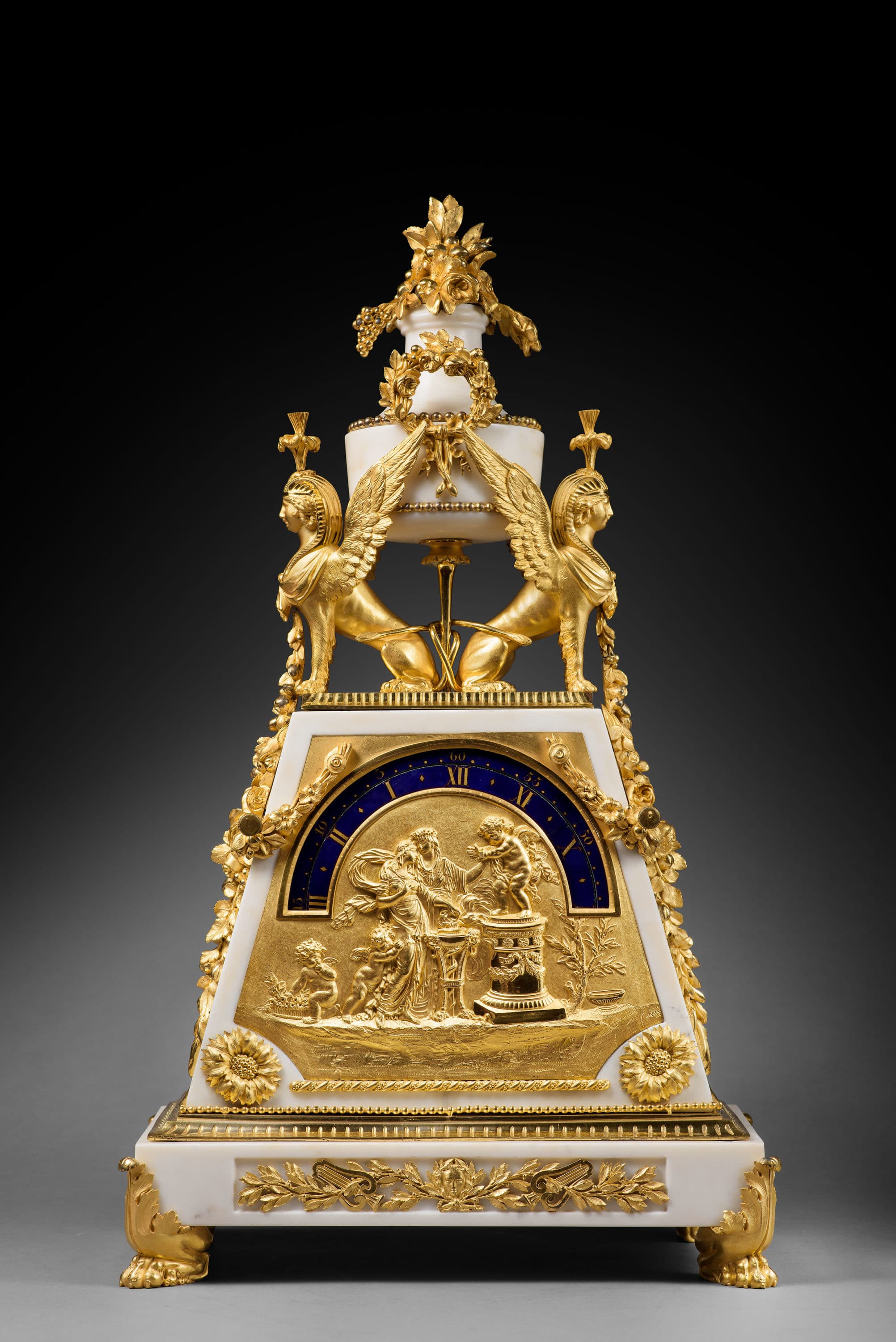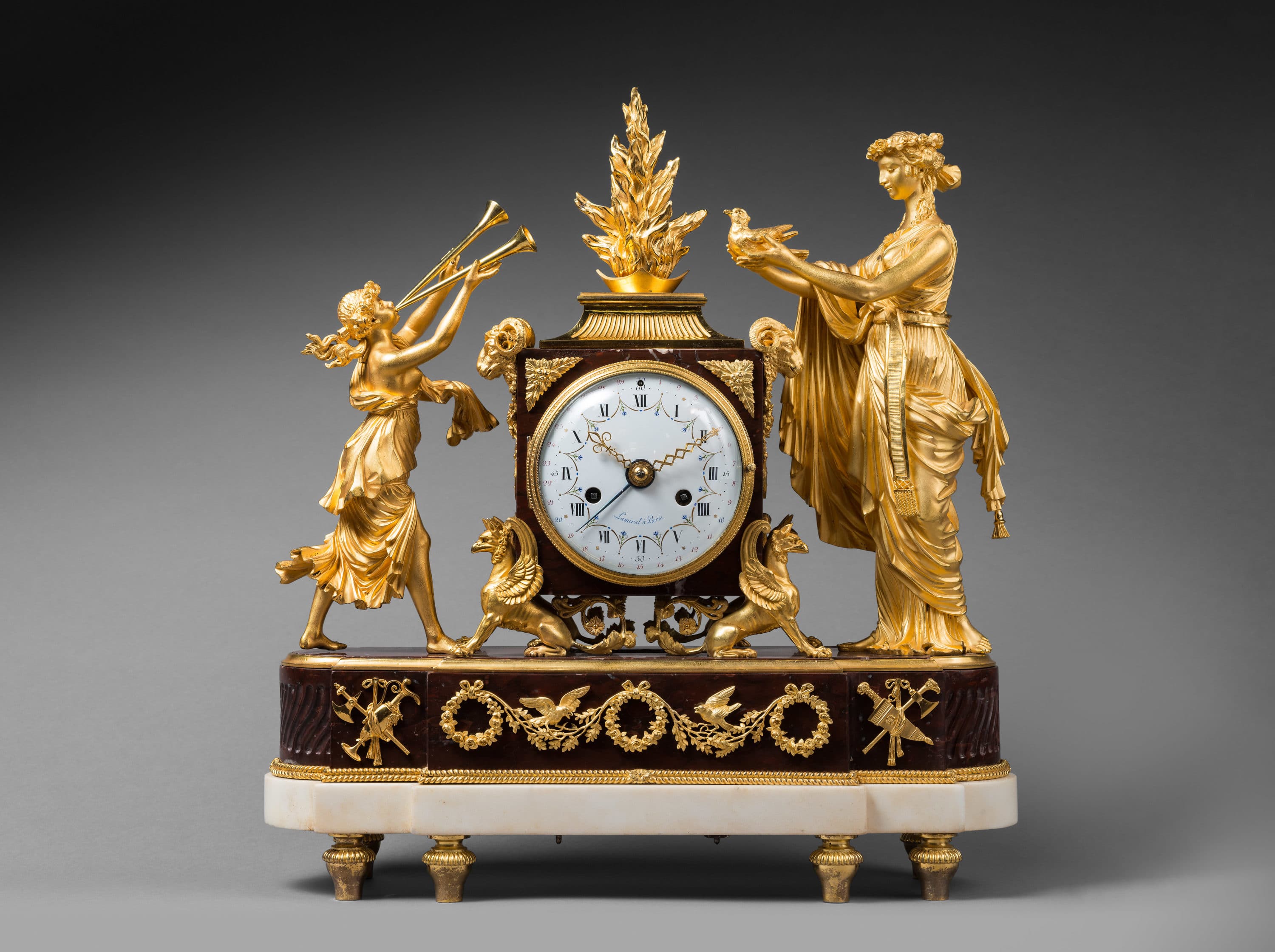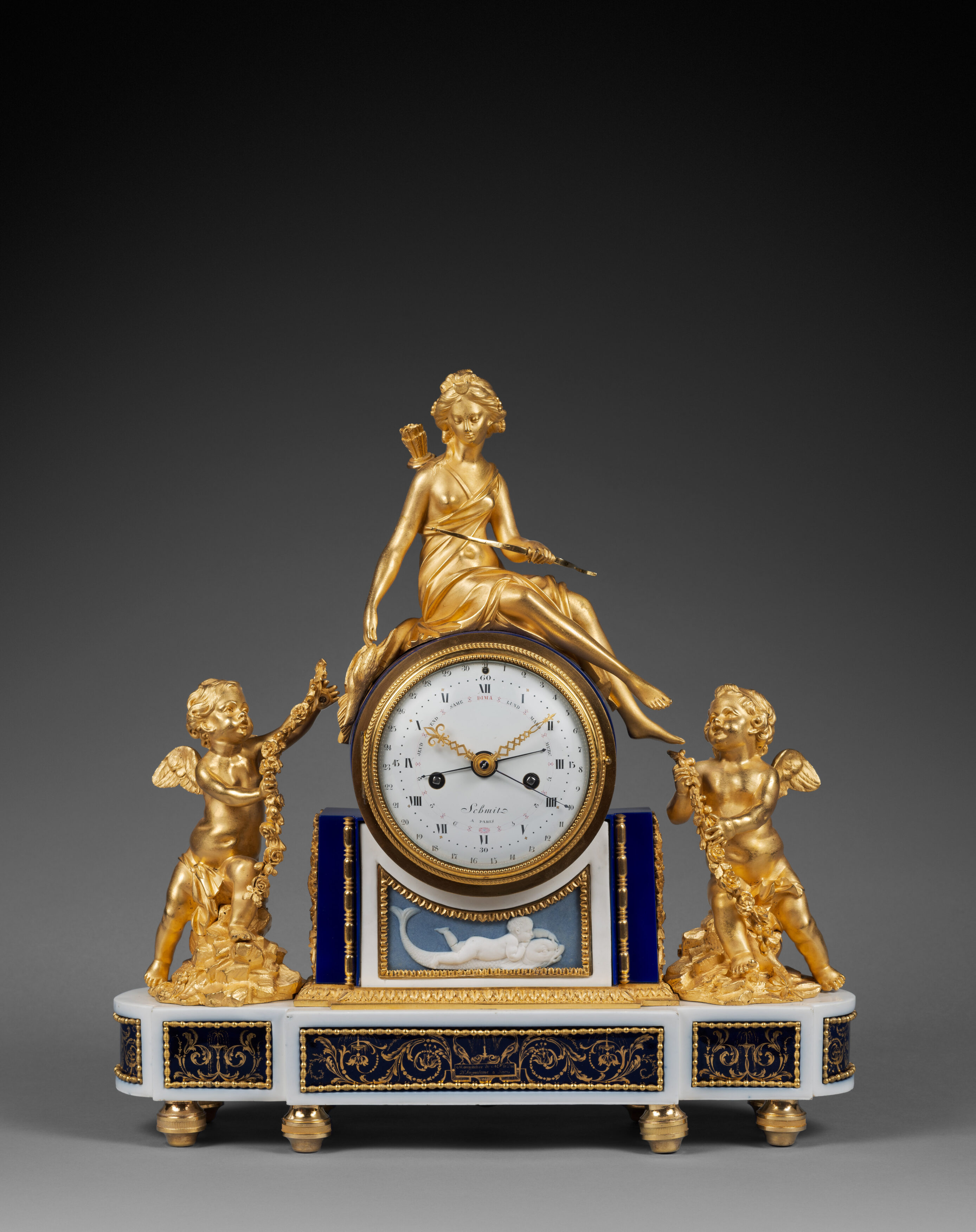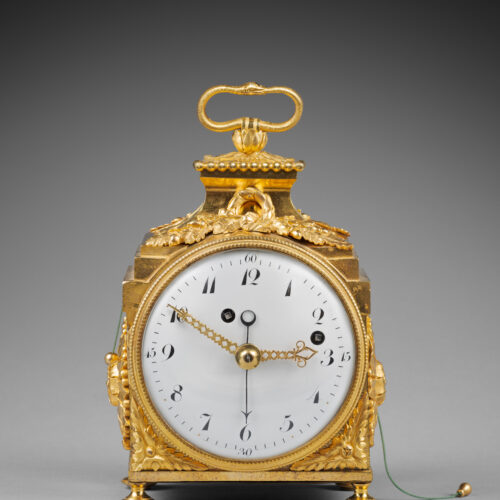Rare Gilt Bronze Pendule d’Officier
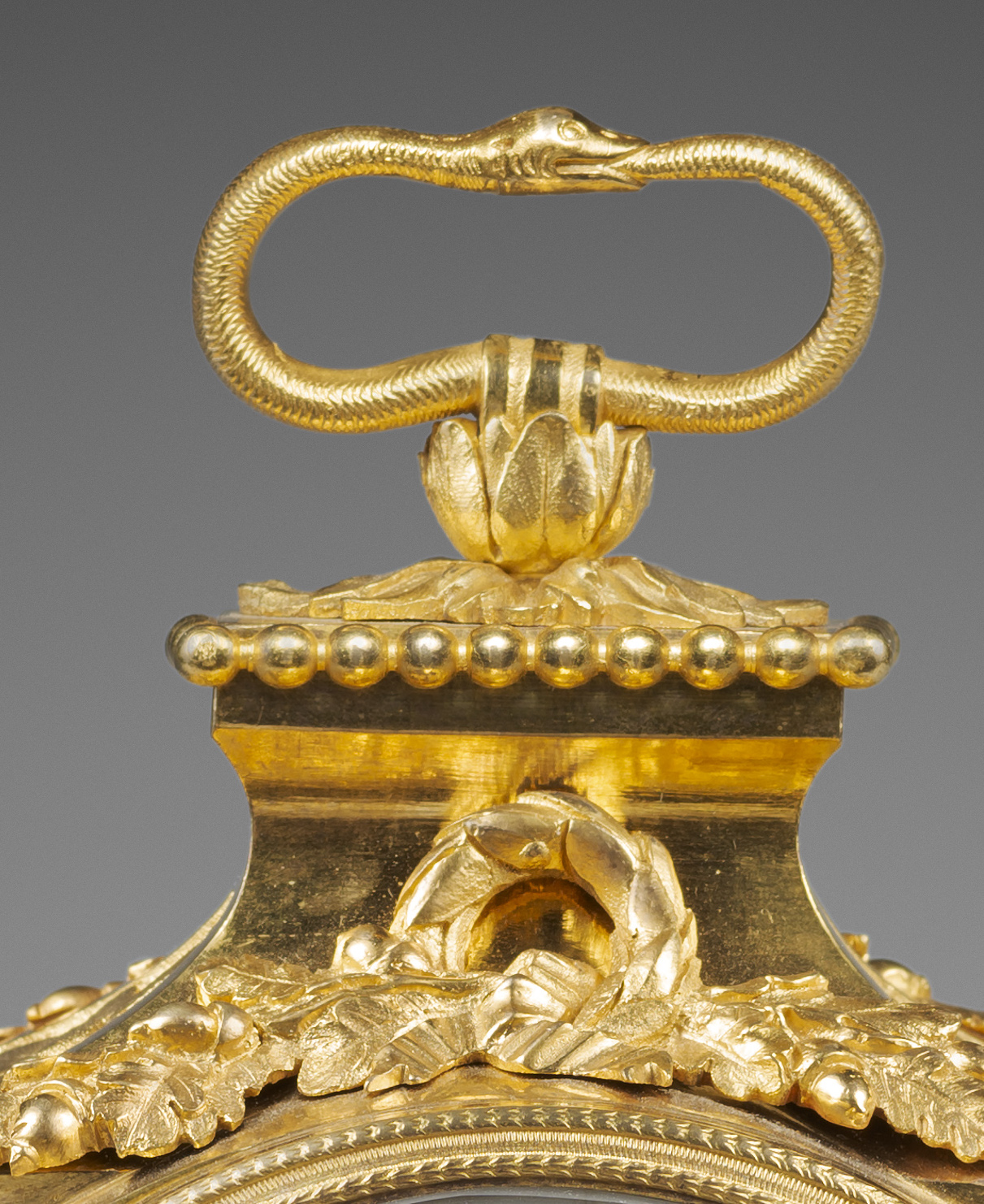
Attributed to the Robert & Courvoisier firm
Switzerland, La Chaux-de-Fonds, Louis XVI period, circa 1785
Bibliography:
Chapuis, “Une maison chaux-de-fonnière: les Robert et les Courvoisier (1710-1830)”, in Pendules neuchâteloises, Documents nouveaux, Editions Slatkine, Geneva, 1987.
The round white enamel dial, signed “Robert & Courvoisier”, indicates the Arabic numeral hours and fifteen-minute intervals by means of two hands in pierced bronze; it also has a blued steel alarm hand. The movement, with a 48-hour power reserve, strikes the hours, half hours, and quarter hours. It is housed in a finely chased gilt bronze neoclassic case. The bezel is adorned with a mille-raie frieze; the handle at the top of the clock takes the form of a snake biting its tail; this is the “Ouroboros”, a symbol of the infinite nature of Time. The handle is set on a bouquet of leaves and rests on an entablature that is adorned with a bead frieze. The concave sides are decorated with oak leaf and acorn garlands; the lower spandrels on the façade are embellished with foliage. The sides are decorated with large, leafy, seeded rosettes and reserves with stylized motifs set against matted grounds. The door on the back is pierced with a lattice pattern centered by cabochons. The clock is raised upon four flattened feet.
Discover our entire collection of rare clocks and antique mantel clocks for sale online or at the gallery.
Today only a small number of identical clocks are known. Among them, one example was offered at auction at Christie’s London on December 4, 1969, lot 29. A second clock, whose dial is unsigned, is illustrated in G. and A. Wannenes, Les plus belles pendules françaises, De Louis XIV à l’Empire, Editions Polistampa, Florence, 2013, p. 183. A third example, formerly in the collection of Count Lamberti, is illustrated in Tardy, La pendule française dans le Monde, Paris, 6th edition, 1994, p. 121. One further similar clock, whose dial is signed “Dubois et Fils”, is illustrated in P. Kjellberg, Encyclopédie de la pendule française du Moyen Age au XXe siècle, Les éditions de l’Amateur, Paris, 1997, p. 174, figure B.
Robert & Courvoisier is one of the best-known Swiss horological firms of the final years of the 18th century and the early years of the following century. It was born of the association of two horological families, the Roberts and the Courvoisiers. Josué Robert (1691-1771) established the family workshop in La Chaux-de-Fonds around 1715 and received the title of Clockmaker to the King in 1725. Having close family ties to the Jaquet-Droz and Sandoz families, he became famous for his inventions and numerous horological innovations, which helped make La Chaux-de-Fonds a very active clockmaking center. One of his sons, Louis-Benjamin Robert (1732-1781), worked in his father’s workshop and became its director after the death of his father in 1771; the company was called “J. Robert et fils”. In 1781, after the death of Louis-Benjamin, his son Aimé Robert (1758-1834) succeeded him and almost immediately (on April 30, 1781) went into partnership with Louis Courvoisier (1758-1832), the son of a Neuchâtel engraver, under the name “J. Robert et fils et Cie”. Aimé Robert was in charge of sales, seeking out commercial opportunities for their work throughout Europe. Louis Courvoisier was in charge of running the workshop and supervising production. In 1791, an inventory of the workshop mentioned hundreds of clocks, numerous employees, artisans and workmen, and highlighted the firm’s important commercial ties with Switzerland, France, Germany, Italy, and in many other European countries. At the time the company was known as “J. Robert et fils, Courvoisier & Cie”. The Napoleonic wars and political instability of the early years of the 19th century created great difficulties for the firm; the workshop decreased its production and concentrated its efforts on very high quality pieces that were destined for exportation. At the time the firm, then called “Robert Courvoisier & Cie”, dominated horological production, which was much decreased. In 1811, after Aimé Robert had retired, the company was known as “Courvoisier & Cie”. It remained active for nearly two more decades.
Discover our entire collection of luxury clocks for sale on La Pendulerie Paris.
